Abstract
People suffering from multiple chemical sensitivity (MCS) complain of a variety of symptoms that could impair cognitive and psychomotor function either directly or indirectly. This paper discusses the use of cognitive and psychomotor performance tests together with some experiment designs that could be considered for use to assess fitness of MCS sufferers for work or the efficacy of diagnostic, preventative, or therapeutic measures. The tests could also contribute to the body of objective information on MCS and help sway the opinion of those who are dubious of its authenticity. The credentials of cognitive and psychomotor performance tests are derived from their successful use in studying the effects of drugs, and the types of tests are illustrated by describing those used by the United Kingdom Defence Evaluation and Research Agency Chemical and Biological Defence Human Studies Group, which has been involved in the assessment of drugs and chemicals on work performance for many years. The tests include mathematical, verbal and spatial processing, tracking, reaction time, attention and vigilance, and memory tests. The discussion of experiment designs includes both repeated measures and parallel groups designs together with their advantages and disadvantages and some suggested modifications to accommodate the particular problems posed by MCS.
Full text
PDF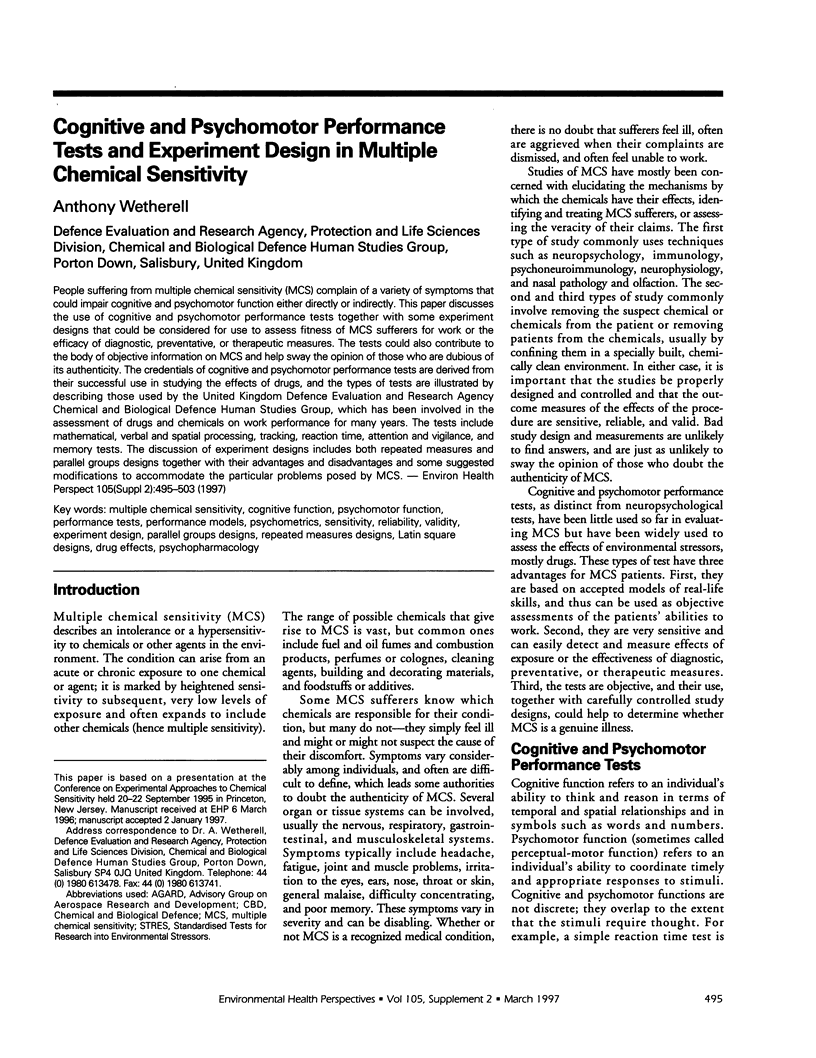
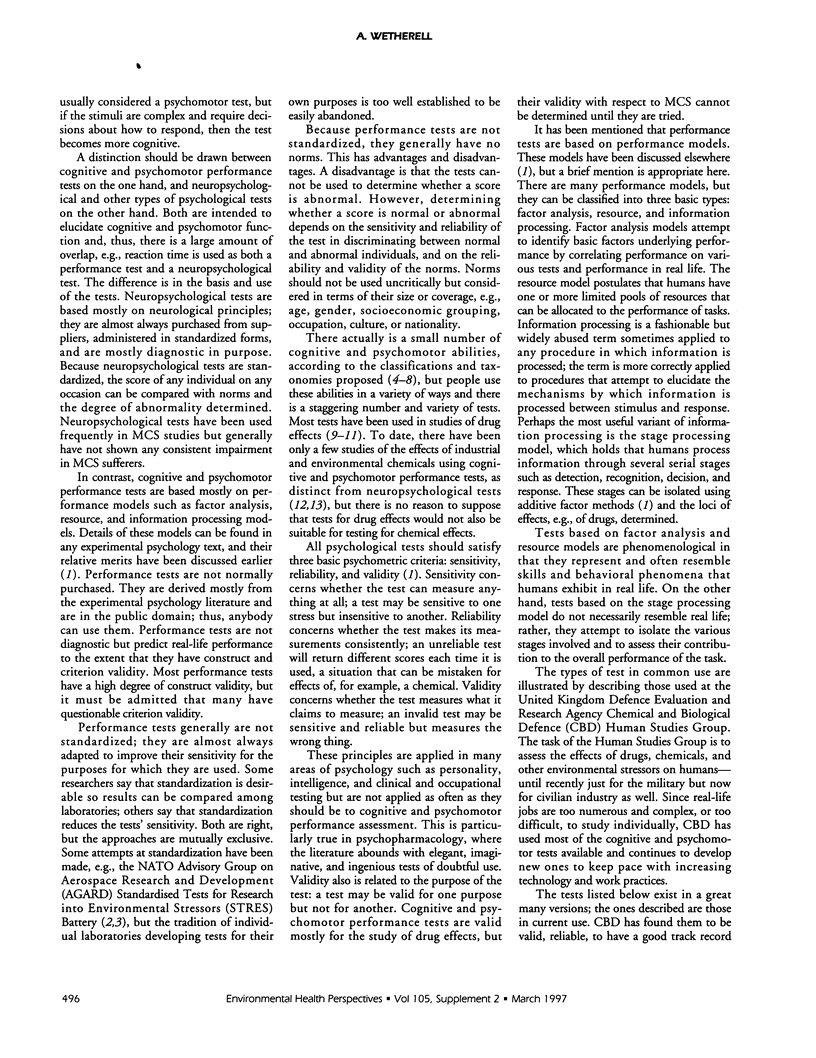
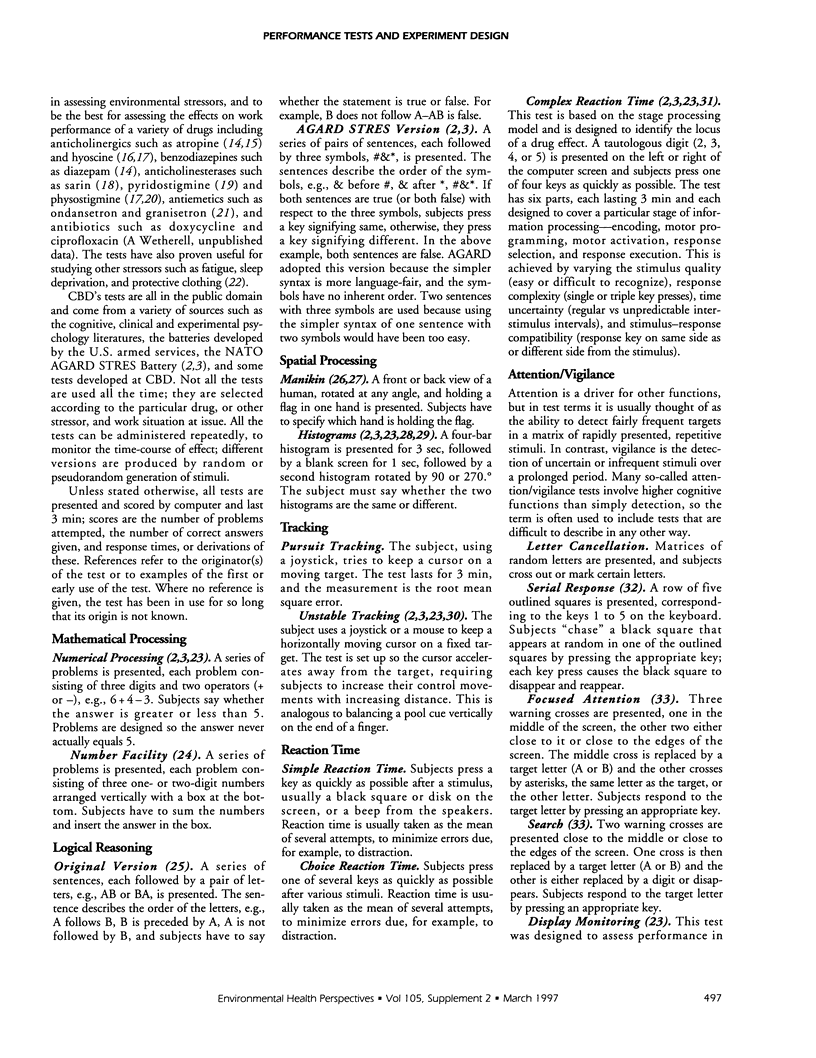
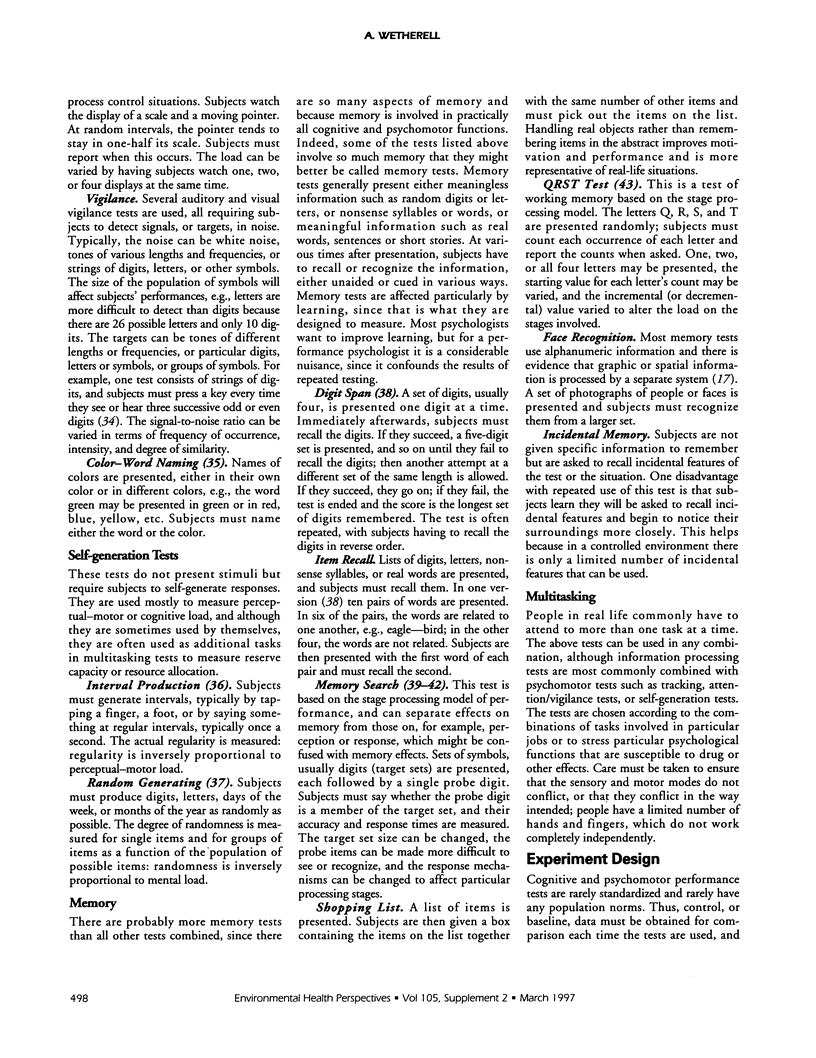
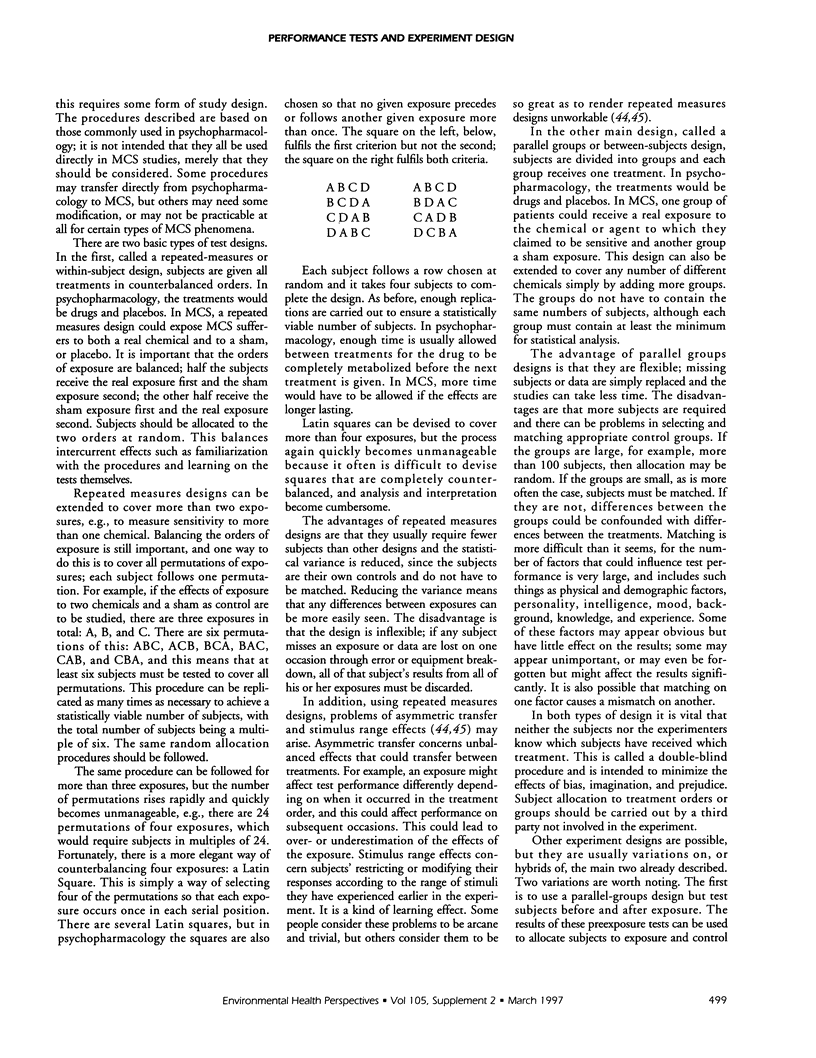
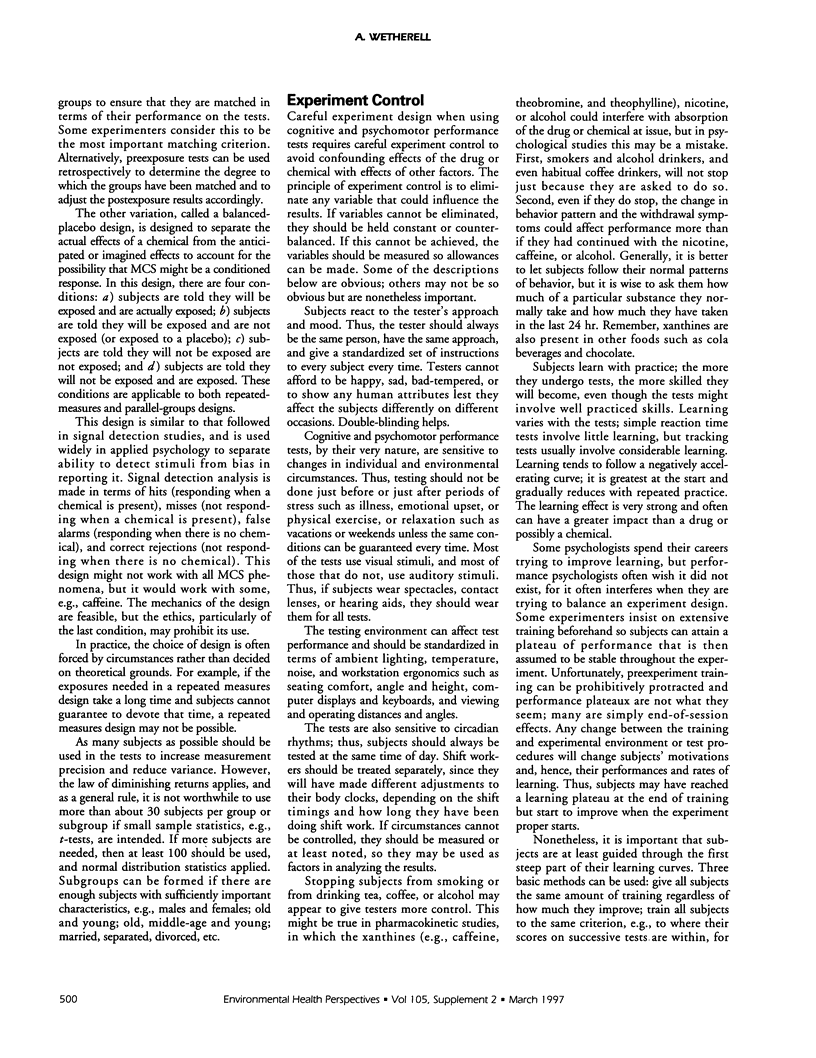
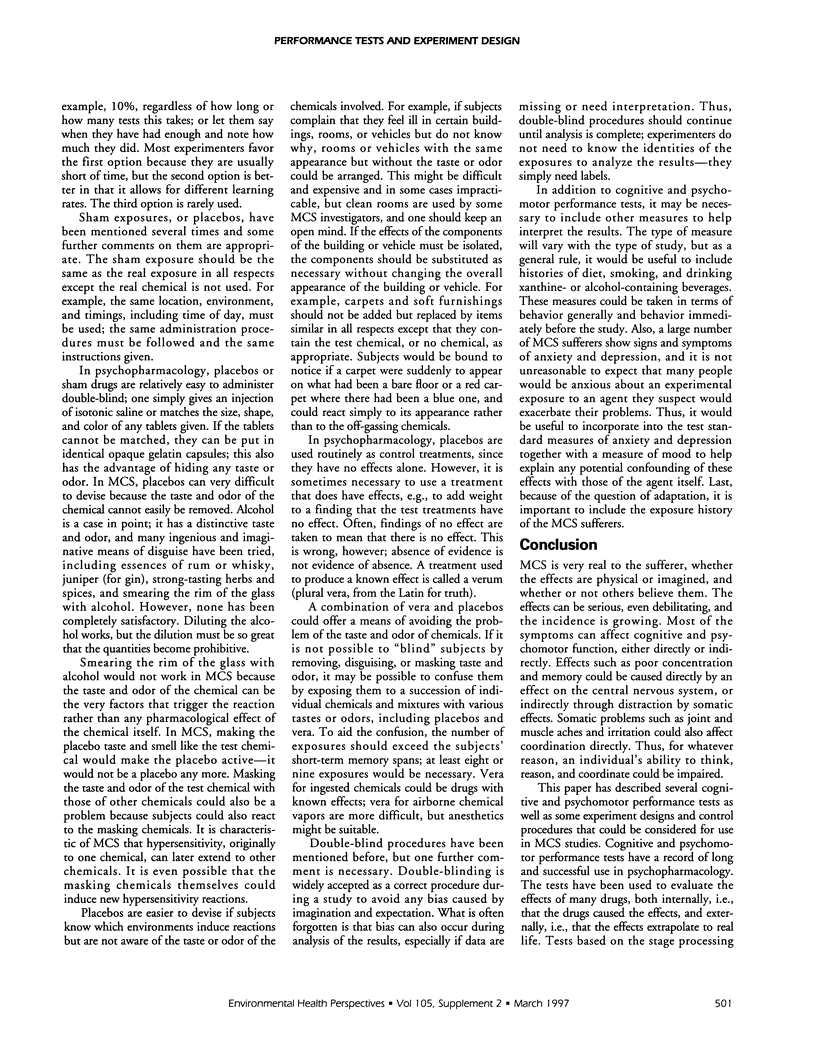
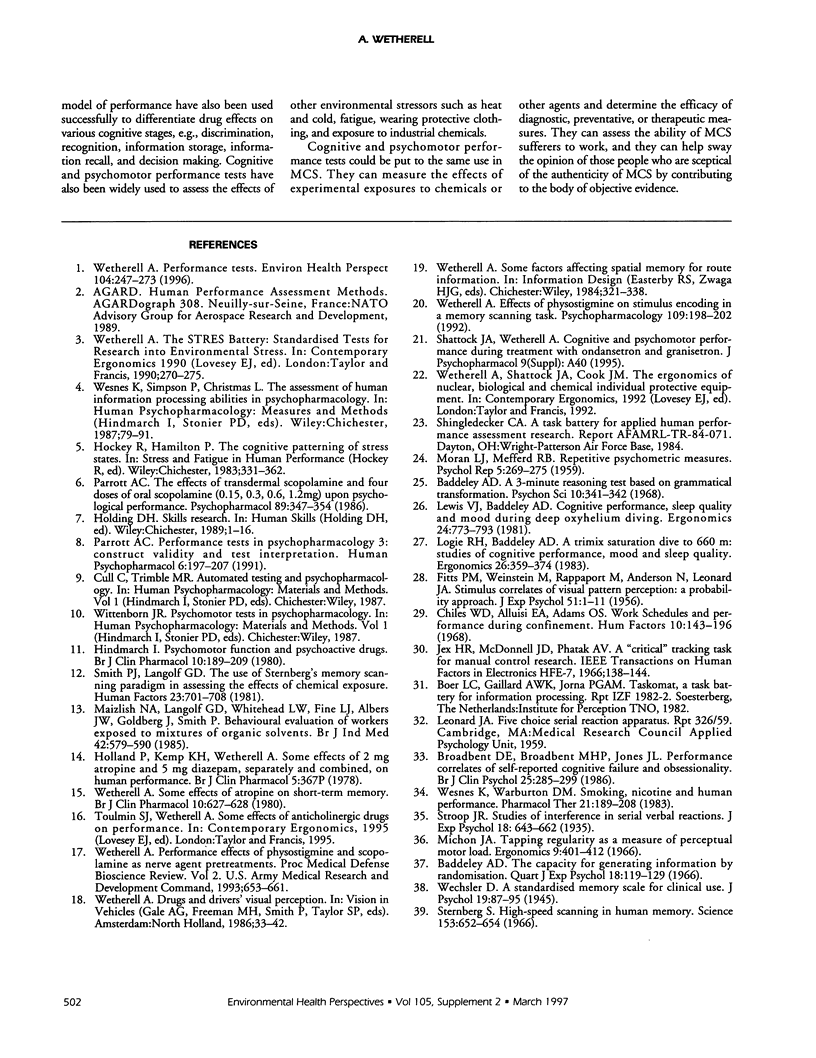
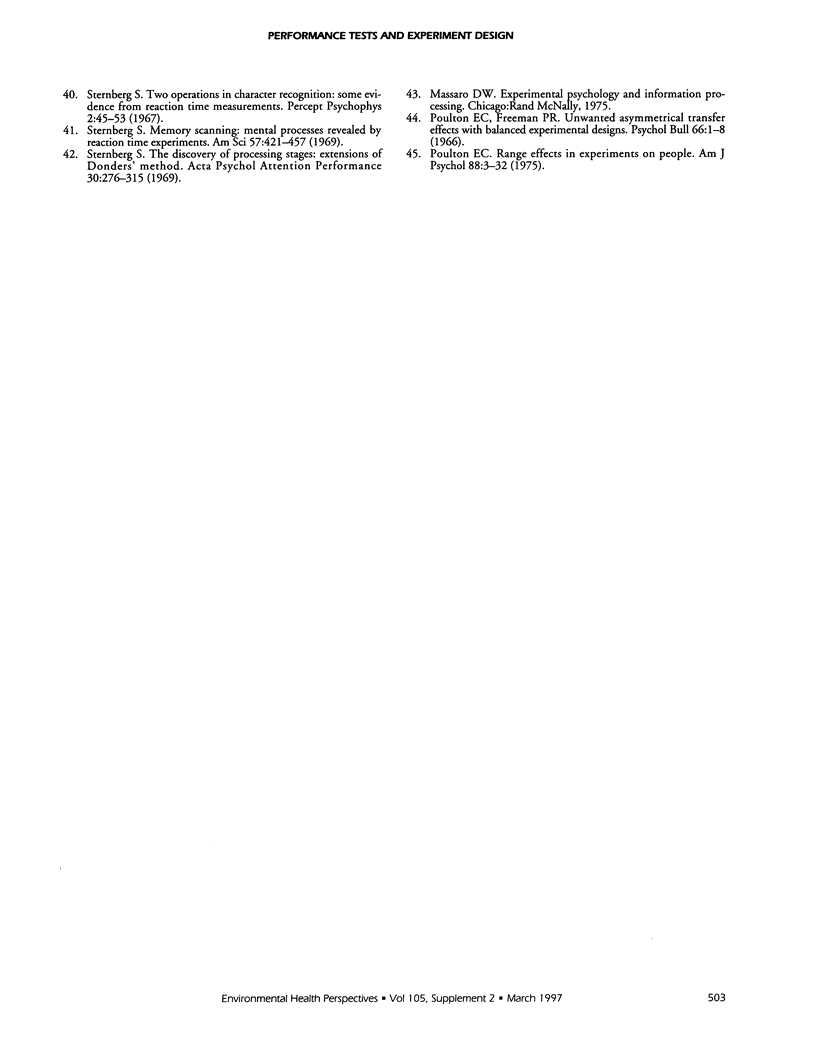
Selected References
These references are in PubMed. This may not be the complete list of references from this article.
- Baddeley A. D. The capacity for generating information by randomization. Q J Exp Psychol. 1966 May;18(2):119–129. doi: 10.1080/14640746608400019. [DOI] [PubMed] [Google Scholar]
- Broadbent D. E., Broadbent M. H., Jones J. L. Performance correlates of self-reported cognitive failure and of obsessionality. Br J Clin Psychol. 1986 Nov;25(Pt 4):285–299. doi: 10.1111/j.2044-8260.1986.tb00708.x. [DOI] [PubMed] [Google Scholar]
- Chiles W. D., Alluisi E. A., Adams O. S. Work schedules and performance during confinement. Hum Factors. 1968 Apr;10(2):143–196. doi: 10.1177/001872086801000206. [DOI] [PubMed] [Google Scholar]
- FITTS P. M., WEINSTEIN M., RAPPAPORT M., ANDERSON N., LEONARD J. A. Stimulus correlates of visual pattern recognition: a probability approach. J Exp Psychol. 1956 Jan;51(1):1–11. doi: 10.1037/h0044302. [DOI] [PubMed] [Google Scholar]
- Hindmarch I. Psychomotor function and psychoactive drugs. Br J Clin Pharmacol. 1980 Sep;10(3):189–209. doi: 10.1111/j.1365-2125.1980.tb01745.x. [DOI] [PMC free article] [PubMed] [Google Scholar]
- Lewis V. J., Baddeley A. D. Cognitive performance, sleep quality and mood during deep oxyhelium diving. Ergonomics. 1981 Oct;24(10):773–793. doi: 10.1080/00140138108924899. [DOI] [PubMed] [Google Scholar]
- Logie R. H., Baddeley A. D. A Trimix saturation dive to 660 m. Studies of cognitive performance, mood and sleep quality. Ergonomics. 1983 Apr;26(4):359–374. doi: 10.1080/00140138308963352. [DOI] [PubMed] [Google Scholar]
- Maizlish N. A., Langolf G. D., Whitehead L. W., Fine L. J., Albers J. W., Goldberg J., Smith P. Behavioural evaluation of workers exposed to mixtures of organic solvents. Br J Ind Med. 1985 Sep;42(9):579–590. doi: 10.1136/oem.42.9.579. [DOI] [PMC free article] [PubMed] [Google Scholar]
- Michon J. A. Tapping regularity as a measure of perceptual motor load. Ergonomics. 1966 Sep;9(5):401–412. doi: 10.1080/00140136608964400. [DOI] [PubMed] [Google Scholar]
- Parrott A. C. The effects of transdermal scopolamine and four dose levels of oral scopolamine (0.15, 0.3, 0.6, and 1.2 mg) upon psychological performance. Psychopharmacology (Berl) 1986;89(3):347–354. doi: 10.1007/BF00174373. [DOI] [PubMed] [Google Scholar]
- Poulton E. C., Freeman P. R. Unwanted asymmetrical transfer effects with balanced experimental designs. Psychol Bull. 1966 Jul;66(1):1–8. doi: 10.1037/h0023427. [DOI] [PubMed] [Google Scholar]
- Smith P. J., Langolf G. D. The use of Sternberg's memory-scanning paradigm in assessing effects of chemical exposure. Hum Factors. 1981 Dec;23(6):701–708. doi: 10.1177/001872088102300607. [DOI] [PubMed] [Google Scholar]
- Sternberg S. High-speed scanning in human memory. Science. 1966 Aug 5;153(3736):652–654. doi: 10.1126/science.153.3736.652. [DOI] [PubMed] [Google Scholar]
- Sternberg S. Memory-scanning: mental processes revealed by reaction-time experiments. Am Sci. 1969 Winter;57(4):421–457. [PubMed] [Google Scholar]
- Wesnes K., Warburton D. M. Smoking, nicotine and human performance. Pharmacol Ther. 1983;21(2):189–208. doi: 10.1016/0163-7258(83)90072-4. [DOI] [PubMed] [Google Scholar]
- Wetherell A. Effects of physostigmine on stimulus encoding in a memory-scanning task. Psychopharmacology (Berl) 1992;109(1-2):198–202. doi: 10.1007/BF02245500. [DOI] [PubMed] [Google Scholar]
- Wetherell A. Performance tests. Environ Health Perspect. 1996 Apr;104 (Suppl 2):247–273. doi: 10.1289/ehp.96104s2247. [DOI] [PMC free article] [PubMed] [Google Scholar]
- Wetherell A. Some effects of atropine on short-term memory. Br J Clin Pharmacol. 1980 Dec;10(6):627–628. doi: 10.1111/j.1365-2125.1980.tb00525.x. [DOI] [PMC free article] [PubMed] [Google Scholar]


